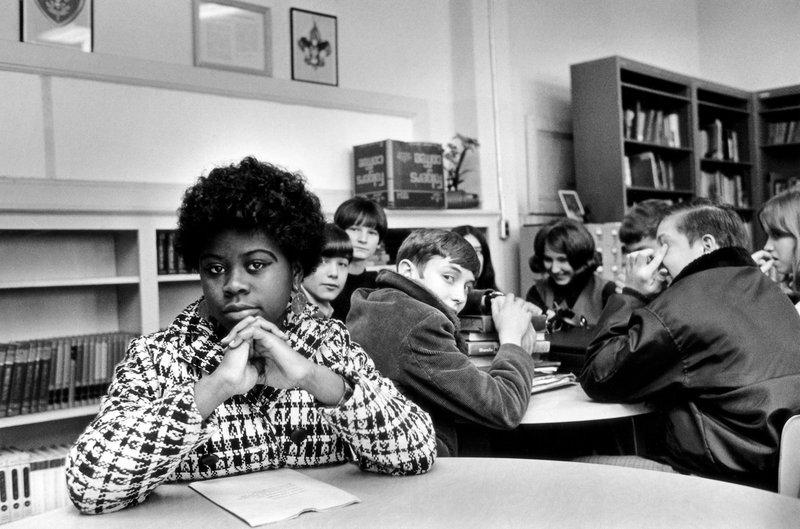Kansas girl at center of 1954 school segregation ruling dies


TOPEKA, Kan. (AP) — Linda Brown, who as a Kansas girl was at the center of the landmark U.S. Supreme Court ruling that struck down racial segregation in schools, has died at age 76.
Her father, Oliver Brown, tried to enroll the family in an all-white school in Topeka, and the case was sparked when he and several black families were turned away. The NAACP’s legal arm brought the lawsuit to challenge segregation in public schools, and Oliver Brown became lead plaintiff in the 1954 Brown v. Board of Education decision by the Supreme Court that ended school segregation.
Sherrilyn Ifill, president and director-counsel at NAACP Legal Defense and Educational Fund, Inc., said in a statement that Linda Brown is one of a band of heroic young people who, along with her family, courageously fought to end the ultimate symbol of white supremacy — racial segregation in public schools.
“She stands as an example of how ordinary schoolchildren took center stage in transforming this country. It was not easy for her or her family, but her sacrifice broke barriers and changed the meaning of equality in this country,” Ifill said.
Peaceful Rest Funeral Chapel of Topeka confirmed that Linda Brown died Sunday afternoon. No cause of death was released. Funeral arrangements are pending.
Her sister, Cheryl Brown Henderson, founding president of The Brown Foundation, confirmed the death to The Topeka Capital-Journal . She declined comment from the family.
The landmark case was brought before the Supreme Court by the NAACP’s legal arm to challenge segregation in public schools. It began after several black families in Topeka were turned down when they tried to enroll their children in white schools near their homes. The lawsuit was joined with cases from Delaware, South Carolina, Virginia and the District of Columbia.
On May 17, 1954, the Supreme Court ruled unanimously that separating black and white children was unconstitutional because it denied black children the 14th Amendment’s guarantee of equal protection under the law. “In the field of public education, the doctrine of ‘separate but equal’ has no place,” Chief Justice Earl Warren wrote. “Separate educational facilities are inherently unequal.”
The Brown decision overturned the court’s Plessy v. Ferguson decision, which on May 18, 1896, established a “separate but equal” doctrine for black’s in public facilities.
“Sixty-four years ago, a young girl from Topeka, Kansas sparked a case that ended segregation in public schools in America,” Kansas Gov. Jeff Colyer said in a statement. “Linda Brown’s life reminds us that by standing up for our principles and serving our communities we can truly change the world. Linda’s legacy is a crucial part of the American story and continues to inspire the millions who have realized the American dream because of her.”
Brown v. Board was a historic marker in the Civil Rights movement, likely the most high-profile case brought by Thurgood Marshall and the lawyers of the NAACP Legal Defense and Education Fund in their decade-plus campaign to chip away at the doctrine of “separate but equal.”
“Her legacy is not only here but nationwide,” Kansas Deputy Education Commissioner Dale Dennis said.
Oliver Brown, for whom the case was named, became a minister at a church in Springfield, Missouri. He died of a heart attack in 1961. Linda Brown and her sister founded in 1988 the Brown Foundation for Educational Equity, Excellence and Research.
The foundation says on its webpage that it was established as a living tribute to the attorneys, community organizers and plaintiffs in the landmark Supreme Court decision. Its mission is to build upon their work and keep the ideals of the decision relevant for future generations.
“We are to be grateful for the family that stood up for what is right,” said Democratic state Rep. Annie Kuether of Topeka. “That made a difference to the rest of the world.”



Brown v. The Board of Education in 1954 changed America forever. Throwing out the whole idea of separate, but equal as inherently unequal. It still took years, especially in the South for other schools, separate facilities such as water fountains and seating in restaurants, on buses etc. to be changed even if sometimes violengtly, but it had to really start somewhere.
School vouchers for private parochial schools and the modern Christian home schooling movement are in large part a lingering reaction of conservatives to Brown v Board. You sure wouldn't want your kid going to school with "those" kind of people, eh? That's why Prince County VA closed its public school system right after the ruling.
I'm really glad my mixed-race kids were able to grow up not just in a better part of the country but in a better era thanks to people like Brown. It must have been hell for her to grow up in a Jim Crow state.
Great article and I agree that much of the reason for home schooling is not just religious, but is segregationist. It's also harmful to most children as they are not educated at as high of a level to be accepted in many colleges and universities, depending on how dedicated and educated their own parents are and how supportive the home schooling system is. In many states home schooling is a joke. In rural Michigan where much of my family lives home schooling is basically the local public school system paying for students to have a laptop and internet access to a contracted education provider who is, in many cases, a scam. There is no real education, the parents are grading their own children's work, including tests and deciding on passing their own children on if they pass on to the next grade, on the honor system with no one from either the contractor or the local schools system checking on them.
Personally I think one of the main advantages of public schools is the contact people have with different races, religions and cultures. I was raised in a small town of 600 people where everyone was white and everyone was Christian and it was considered that that was how normal America was supposed to be. Then I moved in with my Mother and Step-father in Battle Creek and was suddenly attending schools that were approximately 50% White and 50% Black. It was a real shock to the system since racism was rampant at school in the late 1960's and early 70's and you were expected to stay with your own race, which I didn't understand. At that point in my life two of my close cousins had married Black men and there was no problem with it in our family. Roger and Fred were both great guys and were welcomed and accepted just like anyone else and I liked both of them? OK, so there was a slight tremor in the family tree when Mary Ann married Roger, but it passed really quickly as we got to know him. Now there are many mixed marriages in my family including Black, Hispanic and even one cousin married to a guy from Thailand. Our family reunions (back when I still went to them) look like a meeting of the UN. LOL!
I didn't fit in either side because I didn't understand why I was supposed to hate black people because I just wasn't raised to. It didn't make sense to me, so I was rejected by many White students. But I was White, so I wasn't accepted by most of the Black students. Of course it also didn't help that I had a passionate love of Motown, which really confused everyone! I was glad to drop out at the earliest age I could and join the Air Force where I found that a person's race had a lot less meaning and how well they did their job and if you could depend on them was what was really counted.
I was glad to drop out at the earliest age I could and join the Air Force where I found that a person's race had a lot less meaning and how well they did their job and if you could depend on them was what was really counted.